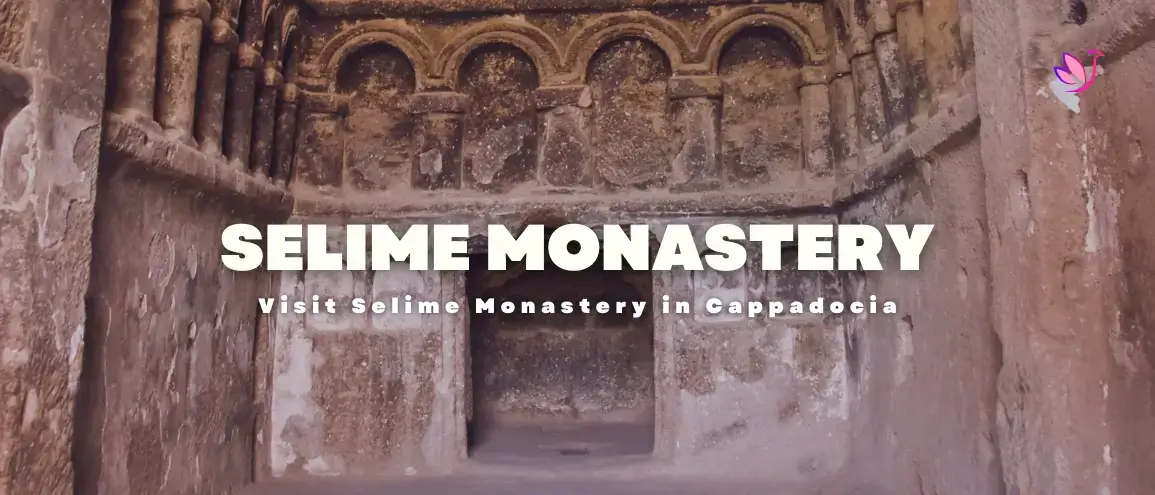Selime Monastery

Selime Monastery: Cappadocia’s Majestic Rock-Cut Monastery
Cappadocia is known for its otherworldly landscapes, ancient cave dwellings, and historical monasteries, with Selime Monastery standing out as one of the most awe-inspiring. This rock-hewn marvel, located at the end of the breathtaking Ihlara Valley, is the largest monastic complex in Cappadocia and offers visitors a unique blend of history, religion, and architecture.
A Glimpse into History
Selime Monastery dates back to the 8th or 9th century, a time when early Christians sought refuge in Cappadocia to escape persecution. This monastic complex served as a spiritual, educational, and defensive center for monks and local communities.
Its strategic location atop a steep hill provided natural protection from invaders, while its extensive rock-cut structures housed a cathedral, chapels, living quarters, stables, and a kitchen. Over time, Selime Monastery played a key role in the spread of Christianity in the region.
What to See at Selime Monastery
1. The Grand Cathedral
The most striking feature of Selime Monastery is its massive rock-cut cathedral, the largest of its kind in Cappadocia. This awe-inspiring space, with its high vaulted ceilings, columns, and intricate carvings, once served as a place of worship and religious gatherings.
2. Ancient Frescoes and Religious Symbols
Although much of the original artwork has faded over time, you can still spot traces of ancient frescoes depicting biblical scenes. These paintings provide insight into the Byzantine Christian influence that shaped the monastery’s spiritual significance.
3. Monastic Living Quarters
As you explore, you’ll come across numerous rock-hewn rooms, which were used as monks’ dwellings, kitchens, and even storage spaces. The large communal kitchen, with its smoke-stained ceilings, is a fascinating reminder of how early monastic communities lived and sustained themselves.
4. Defensive Features and Hidden Passages
Selime Monastery was not just a religious site—it also had a defensive function. You can find hidden tunnels, strategic lookout points, and escape routes carved into the rock, designed to protect the inhabitants from raids and invasions.
Why Visit Selime Monastery?
-
Largest rock-cut monastery in Cappadocia.
-
Stunning views of Ihlara Valley and surrounding landscapes.
-
Rich historical significance in early Christianity.
-
Impressive cave architecture with intricate carvings and frescoes.
Best Time to Visit Selime Monastery
The ideal times to visit are spring (April–June) and autumn (September–November) when the weather is mild, making it easier to explore the site.
How to Get to Selime Monastery
-
By Car: Located about 28 km from Aksaray and 15 km from Ihlara Valley, Selime Monastery is accessible by car.
-
By Tour: Many Cappadocia day tours include Selime Monastery as part of their itinerary, often combined with Ihlara Valley and Derinkuyu Underground City.
Tips for Visiting Selime Monastery
-
Wear sturdy shoes – The site requires some climbing on uneven terrain.
-
Bring water and sun protection – There is little shade in the area.
-
Visit early or late in the day – To avoid crowds and enjoy better lighting for photography.
-
Respect the historical site – Avoid touching the fragile frescoes and carvings.
Conclusion
Selime Monastery is a hidden gem in Cappadocia, offering a rare glimpse into the region’s spiritual and architectural heritage. Whether you're drawn by its history, captivated by its grandeur, or simply looking for an off-the-beaten-path adventure, this magnificent rock-cut monastery is a must-visit destination for any traveler exploring Turkey’s heartland.